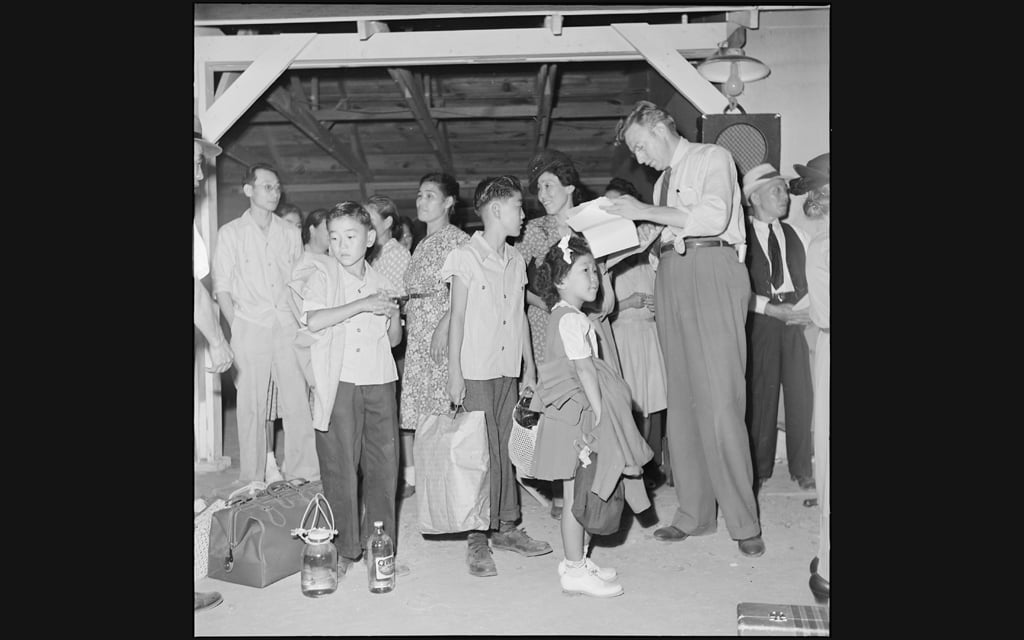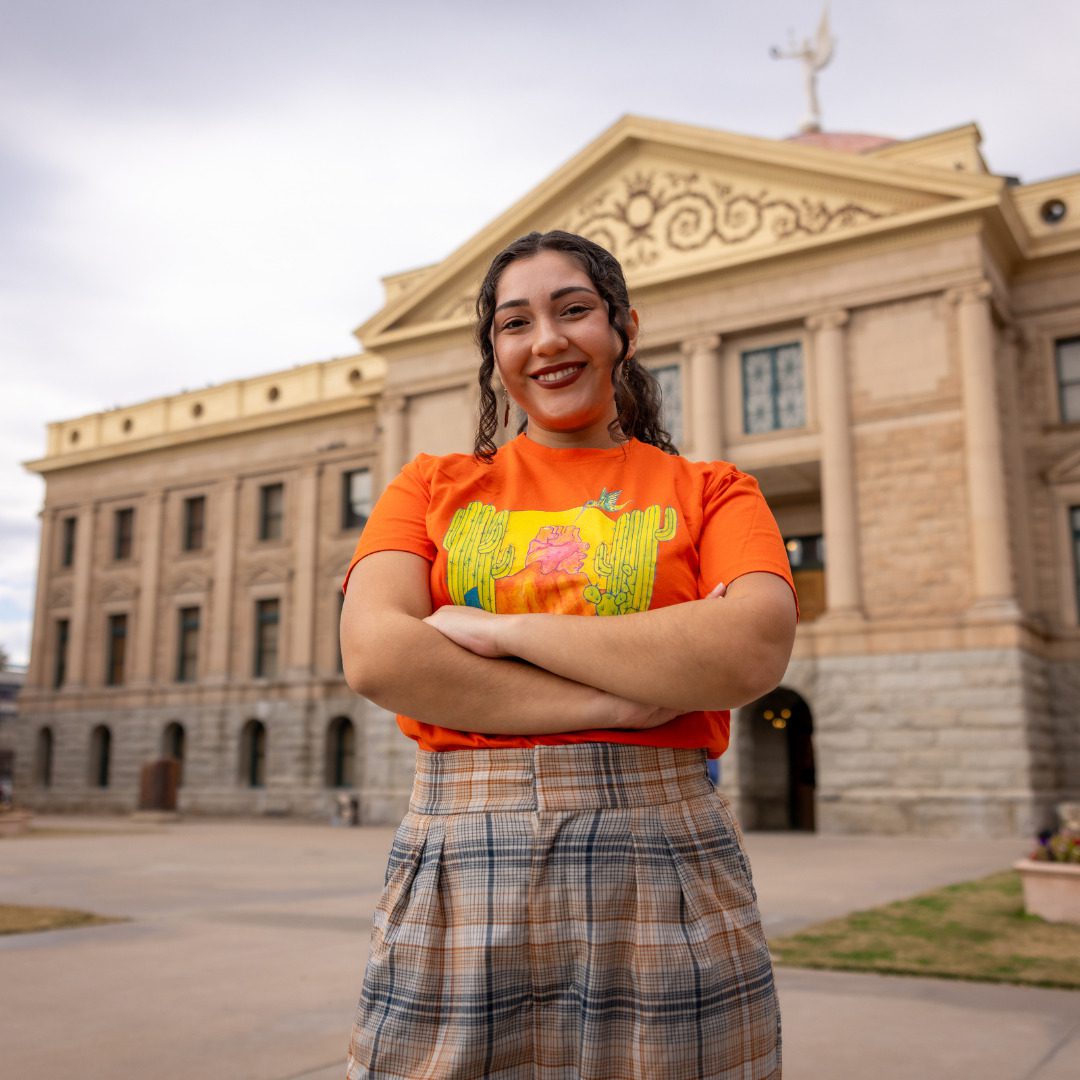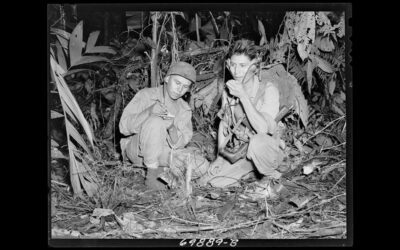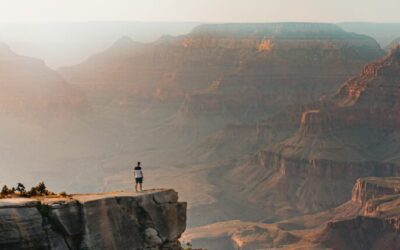
Photo Courtesy of National Trust for Historic Preservation / Robert Mark
Without urgent action, these sacred, historical lands face the constant risk of irreversible damage.
Growing up in Tucson, I learned to feel the deep connection between the land and our communities. My Indigenous and Latine heritage taught me that the environment is more than a backdrop to our lives: it’s part of our identity, culture, and survival.
Today, for me, that connection is under threat, and nowhere is this more evident than at the Great Bend of the Gila.
For millennia, Indigenous communities have called the Great Bend of the Gila home. The land holds the remnants of their civilizations with dwellings, canals, petroglyphs, and geoglyphs that speak to their rich history. At least 13 Tribes maintain deep cultural and ancestral ties to the region.
These sacred lands are not only historical sites but places of ongoing cultural and spiritual importance. Yet, without urgent action, they face the constant risk of irreversible damage.
That’s why this National Public Lands Day, I’d like to call attention to the importance of designating the Great Bend of the Gila as a national monument.
As a federal climate organizer with Chispa Arizona, I have seen firsthand the devastating effects of neglecting Indigenous voices in environmental decisions. The Pinyon Plain Uranium Mine, operating in the newly protected Baaj Nwaavjo I’tah Kukveni – Ancestral Footprints of the Grand Canyon National Monument, poses a direct threat to water sources that Indigenous communities rely on. Approvals for projects like these have historically ignored the concerns of Tribal leaders, putting sacred lands and vital resources at risk.
The situation is no different for the Great Bend of the Gila. Regional growth tied to Phoenix threatens the land through development, off-road vehicle damage, and the sale of public lands to private developers. Vandalism, theft, and the destruction of cultural resources are ongoing.
These threats are made worse by climate change, which is accelerating desertification and putting local species like the bighorn sheep and Sonoran desert tortoise in danger.
A national monument designation would help protect this fragile landscape from further harm, ensuring the preservation of the area’s historical, cultural, and ecological significance for future generations. Monument status would also provide opportunities for co-stewardship between federal agencies and Indigenous Tribes, respecting the original caretakers of this land and incorporating their knowledge into its management.
National Public Lands Day is a key moment to raise our voices and reaffirm the crucial role that we all play in protecting the environment and preserving natural resources for future generations. We are also just getting out of Latino Conservation Week, which we kicked off with a vibrant Stargazing community event at Painted Rock in Gila Bend, in partnership with Sierra Club Grand Canyon Chapter and Respect Great Bend. The event was inclusive, engaging, and educational, garnering a wonderful reaction from the participants and highlighting the importance of our collective efforts in environmental conservation.
At Chispa Arizona, we believe in the power of grassroots activism. Through our Public Lands Comité, we work alongside Indigenous relatives and community members to advocate for the protection of sacred spaces like the Great Bend of the Gila.
Our efforts include organizing actions, informing our people about the importance of conservation efforts, and amplifying the voices of our Indigenous relatives who have been calling for protections for years. We’ve stood with Tribal leaders in calling on Congress and President Joe Biden to declare Great Bend of the Gila a national monument.
This is not just about protecting a landscape; it’s about honoring history, culture, and community. The Great Bend of the Gila is a nexus of cultural, historical, and natural significance that has shaped much of the Southwest’s history and heritage. These lands must be protected in a way that recognizes their importance to Tribes, their cultural and historical values, and their role in species survival, combating climate change, and redressing water scarcity.
The Biden administration can make history by listening to the voices of Indigenous communities and using the Antiquities Act to protect the Great Bend of the Gila. This is a critical moment for environmental justice, cultural preservation, and the health of our planet.
It’s time to act before it’s too late.

5 unsung films that dramatize America’s rich labor history
By Peter Dreier, Occidental College The U.S. is in the midst of a new upsurge of union organizing. Is a Hollywood drama about angry Starbucks...

2 historic Arizona sites make 2025 endangered list
Mystery Castle and May Hicks Curtis House made the National Trust for Historic Preservation's 2025 list of America's 11 Most Endangered Historic...

Internment camps for Japanese Americans in Arizona relied on same 1798 law Trump invoked for deportations
President Trump’s rare use of the Alien Enemies Act has triggered memories of the country's dark chapter of Japanese internment camps. WASHINGTON –...

The 10 best movies set in Arizona
From action and comedy to thrillers and heartfelt dramas, these 10 movies set in Arizona capture everything there is to love about the Grand Canyon...





